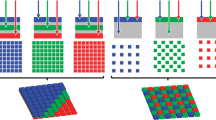Abstract
Deformations of the reflectors of radio telescopes used in geodetic and astrometric VLBI observations belong to the class of systematic error sources which affect the estimated position of the telescope and which necessitates correction at the observation level. The determination of the gravitationally induced deformations requires some effort and needs specific modeling of the impact on the VLBI delay observables. This has been exercised on the Onsala 20 m radio telescope. In this publication, we present an elevation-dependent model for the contributions of the gravitational deformations to the delay observables for application in VLBI data analysis. New is that thermal expansion in some of the contributing components need to be applied also to the gravitational deformation effects. A further novelty is that we can substantiate the validity of and the need for these corrections. Concerning the validity we show that the empirical model used by astronomical colleagues for deliberately shifting the sub-reflector for gain optimization, exactly (within 0.5 mm RMS) matches the measured gravitationally induced displacement of the sub-reflector plus the change in focal length. The other evidence is the impact on the vertical component of the telescope’s coordinates of − 6.1 mm, which reduces the discrepancy determined in the computations of the ITRF2014 to 1.7 mm.















Similar content being viewed by others
Data availability
All data used for developing the model, except of those mentioned in the Acknowledgements, were measured by the authors. These data, especially those of the TLS measurements, are available from the authors on request. The VLBI data of the CONT observing sessions are publicly available on the Internet from the International Service of Geodesy and Astrometry (IVS).
References
Abbondanza C, Sarti P (2010) Effects of illumination functions on the computation of gravity-dependent signal path variation models in primary focus and Cassegrainian VLBI telescopes. J Geod 84(8):515–525. https://doi.org/10.1007/s00190-010-0389-z
Altamimi Z, Rebischung P, Métivier L, Collilieux X (2016) ITRF2014: a new release of the international terrestrial reference frame modeling nonlinear station motions. JGR Solid Earth 121:6109–6131. https://doi.org/10.1002/2016JB013098
Artz T, Springer A, Nothnagel A (2014) A complete VLBI delay model for deforming radio telescopes: the Effelsberg case. J Geod 88(12):1145–1161. https://doi.org/10.1007/s00190-014-0749-1
Baars JWM (2007) The paraboloidal reflector antenna in radio astronomy and communication, vol 348. Springer, New York, p 370. https://doi.org/10.1007/978-0-387-69734-5
Bergstrand S, Herbertsson M, Rieck C, Spetz J, Svantesson CG, Haas R (2018) A gravitational telescope deformation model for geodetic VLBI. J Geod. https://doi.org/10.1007/s00190-018-1188-1
Bizouard C, Lambert S, Richard JY, Becker O (2017) Combined solution C04 for earth rotation parameters consistent with international terrestrial reference frame 2014. IERS technical note. hpiers.obspm.fr/iers/eop/eopc04/C04.guide.pdf
Carter E, Rogers AEE, Counselman CC, Shapiro II (1980) Comparison of geodetic and radio interferometric measurements of the Haystack–Westford base line vector. JGR 85:2685–2687
Cha AG (1987) Phase and frequency stability of Cassegrain antennas. Radio Sci 22:156–166
Clark TA, Thomsen P (1988) Deformations in VLBI antennas. Technical report 100696. NASA, Greenbelt, MD
Eschelbach C, Haas R (2003) The IVS-reference point at Onsala—high end solution for a real 3D-determination. In: Schwegmann W, Thorandt V (eds) Proceedings of the 16th working meeting on European VLBI for geodesy and astronomy, BKG Leipzig, pp 109–118
Fey AL, Gordon D, Jacobs CS, Ma C, Gaume RA, Arias EF, Bianco G, Boboltz DA, Böckmann S, Bolotin S, Charlot P, Collioud A, Engelhardt G, Gipson J, Gontier AM, Heinkelmann R, Kurdubov S, Lambert S, Lytvyn S, MacMillan DS, Malkin Z, Nothnagel A, Ojha R, Skurikhina E, Sokolova J, Souchay J, Sovers OJ, Tesmer V, Titov O, Wang G, Zharov V (2015) The second realization of the international celestial reference frame by very long baseline interferometry. Astron J 150(2):58. https://doi.org/10.1088/0004-6256/150/2/58
Hobiger T, Otsubo T, Sekido M, Gotoh T, Kubooka T, Takiguchi H (2010) Fully automated VLBI analysis with c5++ for ultra-rapid determination of UT1. Earth Planets Space 62(12):933–937. https://doi.org/10.5047/eps.2010.11.008
Holst C, Kuhlmann H (2014) Aiming at self-calibration of terrestrial laser scanners using only one single object and one single scan. J Appl Geod 8(4):295–310. https://doi.org/10.1515/jag-2014-0017
Holst C, Kuhlmann H (2016) Challenges and present fields of action at laser scanner based deformation analyses. J Appl Geod 10(1):17–25. https://doi.org/10.1515/jag-2015-0025
Holst C, Zeimetz P, Nothnagel A, Schauerte W, Kuhlmann H (2012) Estimation of focal length variations of a 100 m radio telescope’s main reflector by laser scanner measurements. J Surv Eng 138(3):126–135. https://doi.org/10.1061/(ASCE)SU.1943-5428.0000082
Holst C, Nothnagel A, Blome M, Becker P, Eichborn M, Kuhlmann H (2015) Improved area-based deformation analysis of a radio telescope’s main reflector based on terrestrial laser scanning. J Appl Geod 9(1):1–14. https://doi.org/10.1515/jag-2014-0018
Holst C, Schunck D, Nothnagel A, Haas R, Wennerbäck L, Olofsson H, Hammargren R, Kuhlmann H (2017) Terrestrial laser scanner two-face measurements for analyzing the elevation-dependent deformation of the Onsala Space Observatory 20-m radio telescope’s main reflector in a bundle adjustment. Sensors 17(8):1833. https://doi.org/10.3390/s17081833
Holst C, Medic T, Kuhlmann H (2018) Dealing with systematic laser scanner errors due to misalignment at area-based deformation analyses. J Appl Geod 12(2):169–185. https://doi.org/10.1515/jag-2017-0044
Holst C, Nothnagel A, Haas R, Kuhlmann H (2019) Investigating the gravitational stability of a radio telescope’s reference point using a terrestrial laser scanner: case study at the Onsala Space Observatory 20-m radio telescope. ISPRS J Photogramm 149:67–76. https://doi.org/10.1016/j.isprsjprs.2019.01.010
International VLBI Service for Geodesy and Astrometry (2008) Continuous VLBI campaign 2008. https://ivscc.gsfc.nasa.gov/program/cont08/
International VLBI Service for Geodesy and Astrometry (2011) Continuous VLBI campaign 2011. https://ivscc.gsfc.nasa.gov/program/cont11/
International VLBI Service for Geodesy and Astrometry (2014) Continuous VLBI campaign 2014. https://ivscc.gsfc.nasa.gov/program/cont14/
International VLBI Service for Geodesy and Astrometry (2017) Continuous VLBI campaign 2017. https://ivscc.gsfc.nasa.gov/program/cont17/
Johansson LA, Stodne F, Wolf S (1996) The Pisa project, variations in the height of the foundation of the 20 meter radio telescope. Onsala Space Observatory, Chalmers University of Technology. Research report no 178, Göteborg
Katow MS (1981) DSS 14 64-m antenna-computed RF pathlength changes under gravity loadings. TDA progress report 4264. Jet Propulsion Laboratory, Pasadena, pp 123–131
Mikhail E, Ackermann F (1976) Observations and least squares. Dun-Donelly, New York
Muralikrishnan B, Ferrucci M, Sawyer D, Gerner G, Lee V, Blackburn C, Phillips S, Petrov P, Yakovlev Y, Astrelin A, Milligan S, Palmateer J (2015) Volumetric performance evaluation of a laser scanner based on geometric error model. Precis Eng 40:139–150. https://doi.org/10.1016/j.precisioneng.2014.11.002
Nothnagel A (2009) Conventions on thermal expansion modelling of radio telescopes for geodetic and astrometric VLBI. J Geod 83(9):787–792. https://doi.org/10.1007/s00190-008-0284-z
Otoshi TY, Young LE (1982) An experimental investigation of the changes of VLBI time delays due to antenna structural deformations. TDA progress report 42-41, Pasadena, pp 218–225
Sarti P, Vittuari L, Abbondanza C (2009a) Laser scanner and terrestrial surveying applied to gravitational deformation monitoring of large VLBI telescopes’ primary reflector. J Surv Eng 135(4):136–148. https://doi.org/10.1061/(ASCE)SU.1943-5428.0000008
Sarti P, Abbondanza C, Vittuari L (2009b) Gravity-dependent signal path variation in a large VLBI telescope modelled with a combination of surveying methods. J Geod 83(11):1115–1126. https://doi.org/10.1007/s00190-009-0331-4
Sarti P, Abbondanza C, Petrov L, Negusini M (2011) Height bias and scale effect induced by antenna gravitational deformations in geodetic VLBI data analysis. J Geod 85(1):1–8
Sovers OJ, Fanselow JL, Jacobs CS (1998) Astrometry and geodesy with radio interferometry: experiments, models, results. Rev Mod Phys 70(4):1393–1454. https://doi.org/10.1103/RevModPhys.70.1393
Acknowledgements
We are grateful to Jonas Flygare for providing the coefficients of the illumination function, to Anara Kudabayeva for preparing the Monte Carlo simulations, and to Sten Bergstrand for making available his measurement results of the sub-reflector monitoring. Concerning the VLBI data used for the validation, we thank the IVS for providing the VLBI observation data. We also thank Dan MacMillan for checking the manuscript and the three anonymous reviewers for their numerous helpful comments.
Author information
Authors and Affiliations
Contributions
AN developed the VLBI correction model, CH performed and analyzed the TLS measurements, RH carried out the local investigations as well as the VLBI data analysis. All authors contributed to the manuscript and cross-checked the contents.
Corresponding author
Rights and permissions
About this article
Cite this article
Nothnagel, A., Holst, C. & Haas, R. A VLBI delay model for gravitational deformations of the Onsala 20 m radio telescope and the impact on its global coordinates. J Geod 93, 2019–2036 (2019). https://doi.org/10.1007/s00190-019-01299-x
Received:
Accepted:
Published:
Issue Date:
DOI: https://doi.org/10.1007/s00190-019-01299-x




